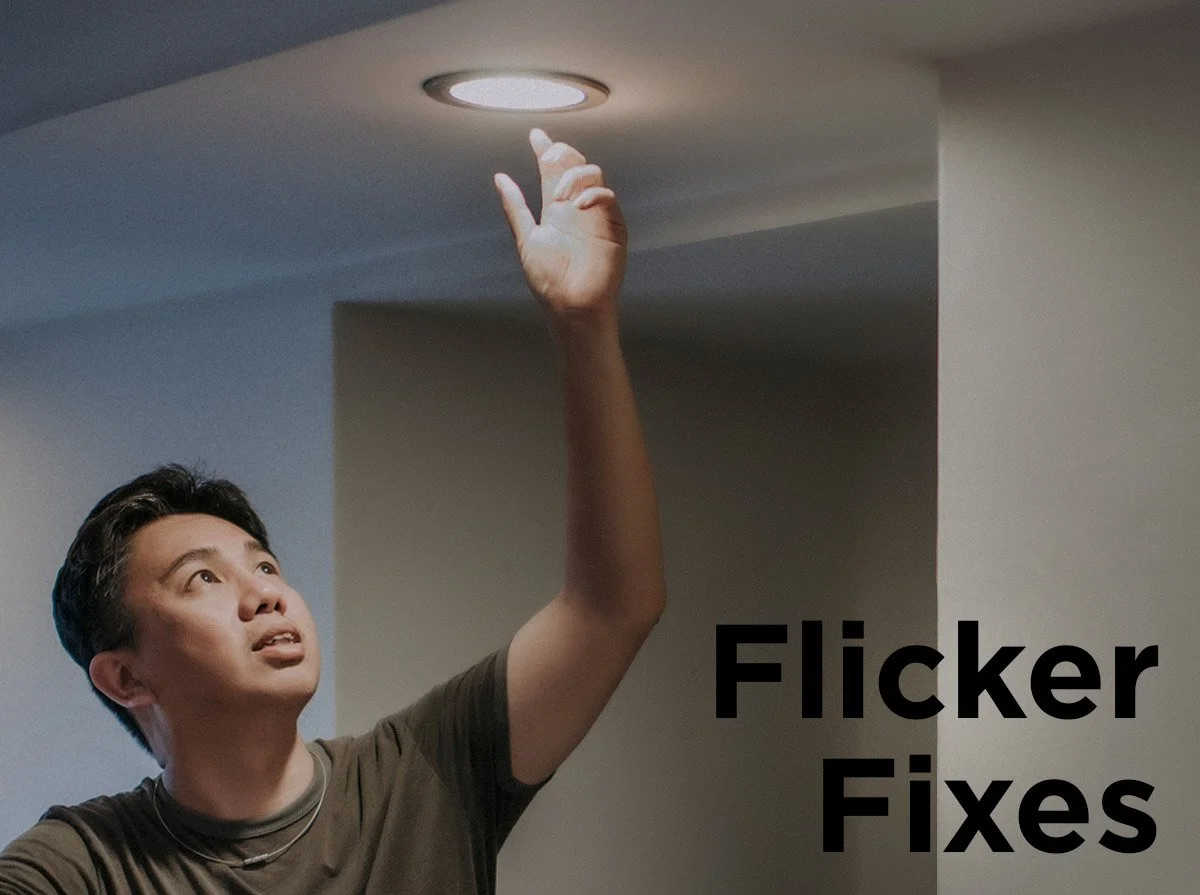Flicker Fixes
Ah . . . who can resist the warm and romantic flicker of candlelight? Or the festive glimmering of twinkle lights on your Christmas tree? Both are perfectly acceptable instances for flickering lights. However, if you’ve got a flicker in a lamp or overhead lighting, you may have a fixture on the fritz! Do you attempt the fix yourself or call in a professional? Let’s look at some of the most common reasons for an undesirable flicker.
First, make sure the condition isn’t just a normal side effect of the lighting technology. Fluorescent lights are notorious for flicker within the first minute or so of turning on as the phosphors reach peak illumination. If it’s your fluorescents acting up, it’s probably normal and just takes some getting used to rather than some serious fix. Keep this in mind when retrofitting down the road—more current lighting technologies, like LED, have all but eliminated the frustrating flicker. And even though it’s possible for LED fixtures to flicker, it’s usually when they are improperly connected to a driver or paired with an incompatible dimmer. Always check the compatibility charts on 1000Bulbs.com when choosing your driver or dimming system.
OK, on to the fixes. One of the most common reasons for a flicker is also one of the most easily solved—check that your bulbs are securely tightened in their sockets. Sometimes just a quick twist will banish the flick. If this fix doesn’t do the trick, move on to checking the light switch. Try toggling your light switch on and off or shut it off completely and try to turn it on again a while later. If the problem fixes itself, you’ve found your culprit. If you consistently need to do this to keep your lights from flickering, consider replacing the switch.
When your lights flicker or dim while operating larger appliances in your home, or your bulbs burn out at lightning speed, you may need to call in professional help. It could mean that the incoming voltage to your home isn’t adequate or is fluctuating beyond a normal range. Although a little fluctuation is normal, your home should always be supplied with between 115 and 125 volts. Contact a licensed electrician to evaluate your specific situation.
Your electrician may do an entire home inspection and find that loose or faulty wiring is, in fact, to blame. Whatever foreboding situation is the cause, don’t be frightened by the flicker! If you can’t easily and safely resolve the situation yourself, your electrician will be happy to make suggestions on the solutions and get your lighting operating properly and flicker-free in no time. For additional guidance, call one of our lighting experts at 1-800-624-4488.









